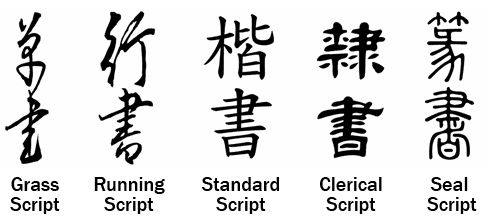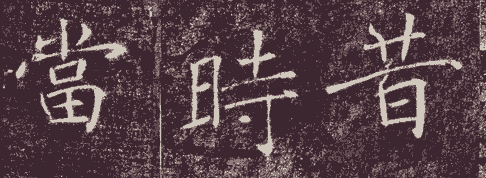Last week I introduced my theory that the beauty of East Asian calligraphy lies in the balance it strikes between Vitality and Stability. I didn’t get much further than just introducing the theory in abstract, so for the next two entries I thought I’d go into a little more detail and provide a few specific examples of what I’m talking about. This week will focus on Vitality.
As I mentioned before, East Asian calligraphy is often divided into five main scripts:

Each script has its own aesthetic ideals & approaches to achieving balance. For simplicities sake, I’m going to focus on how Running and Standard scripts address this challenge. They were the last two scripts to evolve, and could (arguably) be considered East Asian calligraphy’s the most perfect expressions of balance between Vitality and Stability.
Expressing Vitality
As I’ve previously written, lines could be thought of as records of energy/movement. In this sense lines are, in their very essence, expressions of vitality. Calligraphers have developed a number of methods to emphasize this intrinsic quality in their work:
Right-rising
In Running and Standard scripts, horizontal lines are rarely perfectly even, but tend to rise from left to right. This tendency no doubt evolved for practical reasons; people can write more quickly and comfortably if they don’t have to worry about keeping their horizontal lines T-square perfect. But it helps to enhance the Vitality of the work as well, by creating a sense of imbalance that suggests movement.

Modulated Strokes
Early in its history, Chinese calligraphers seemed to idealize uniform line width, but as the art evolved, calligraphers began to recognize the artistic/practical advantages of varied width in creating a sense of liveliness in their work. Virtually all East Asian calligraphy is done with a brush, which more than any other writing tool allows for flowing changes in line width. By slowly pressing a brush into the paper as you move along, you can create lines that go from the width of an eyelash to an inch thick in a single movement, with dynamic results.

Invisible connections
A sense of energy/connection can be conveyed even in areas where the brush has left no mark. Take the following example:

Technically, these are three separate, distinct lines. But it is easy to see how the brush rose off and fell back into the paper in a single flowing movement. There is a sense of energy that flows from line to line that connects them as a whole.
This is an important principle in East Asian calligraphy, particularly in Running Script and Grass Script. One of my professors suggested that a character should be written in a single breath, without stopping to recharge the brush with ink. Stopping in the middle of a character would snuff out its life. It is widely believed that calligraphic works should be written in one sitting, to suggest a unified, energetic whole.

Next week’s entry will be about how a sense of Stability is achieved.

